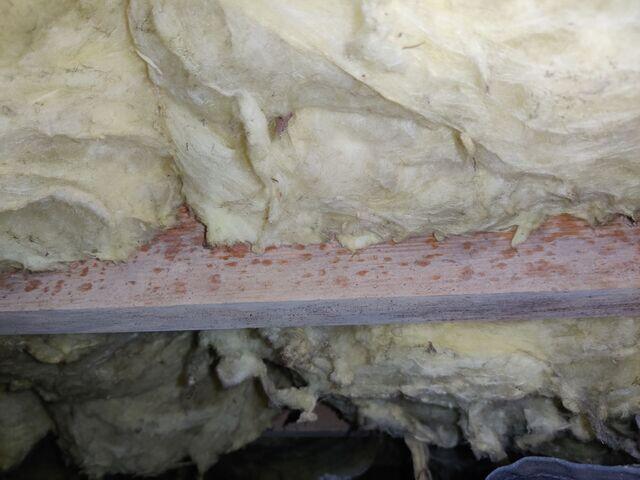
Mold Growth
Moisture has allowed mold to start to grow on the wood floor joists and in the insulation. This will have to be removed and the mold will be treated before the encapsulation process starts.
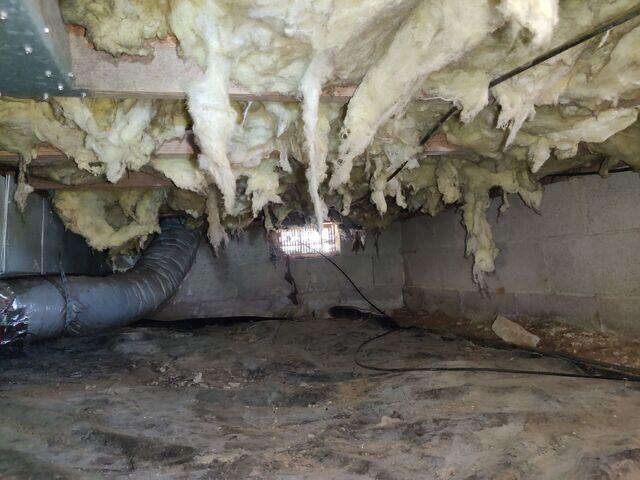
Moisture Issues
You can see signs of water damage in this crawl space. There is wet dripping insulation, water lines on the concrete block walls from water seeping out, dirt, and mud over the old crawl space barrier.
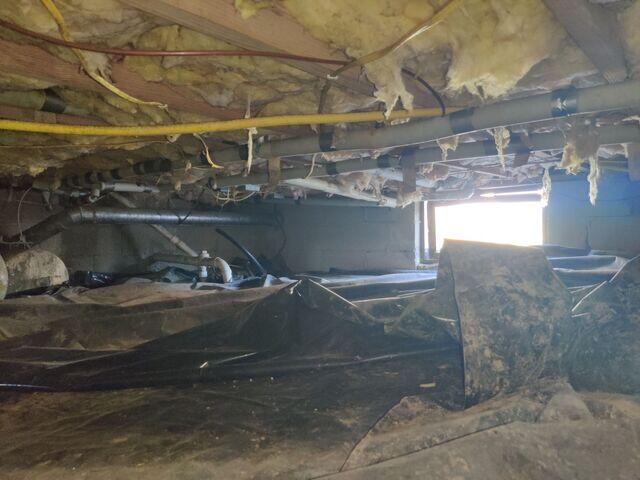
Debris
The old vapor barrier, seen in this photo, will have to be removed in order to clean out the crawl space before our waterproofing products will be installed.
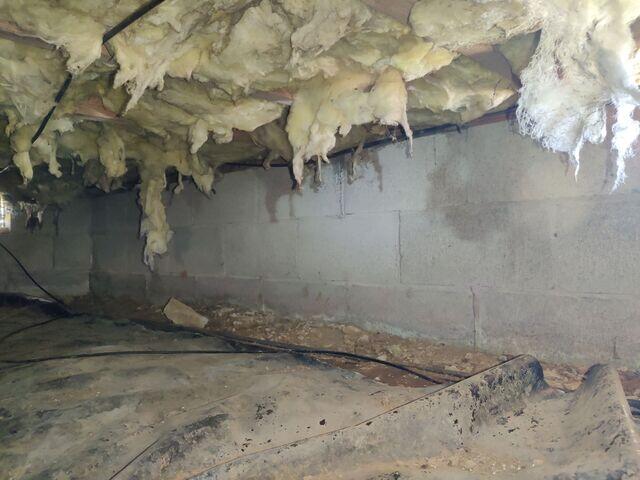
Moisture damage signs
Water marks are all over the concrete block walls, these are signs that moisture is seeping out of these walls.
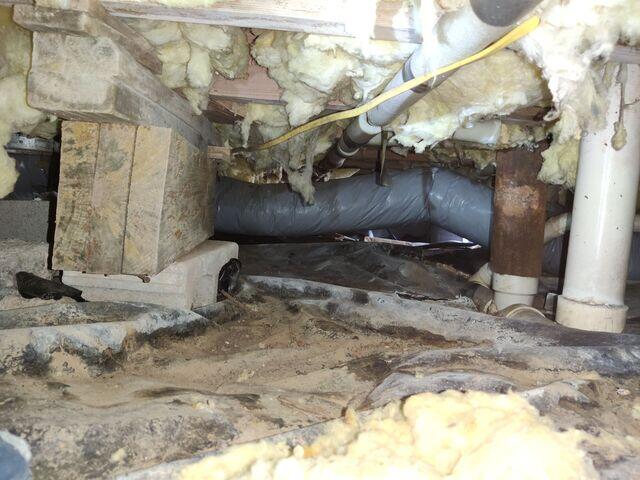
Crawl Space Damage
Moisture, mold and falling, failing insulation are problems in this crawl space, which hasn't been properly sealed. The encapsulation treatment totally separates and protects the crawl space interior from outdoor conditions, keeping the space clean and dry.
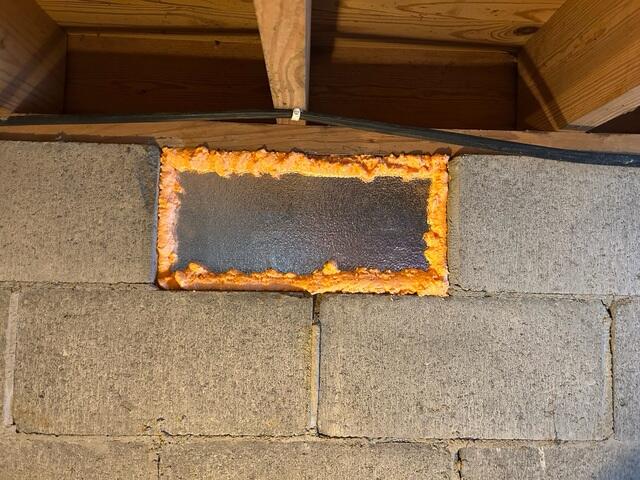
Vents Sealed
Sealing your crawl space vents stops the cycle of cold, humidity, and moisture entering from the outside air.
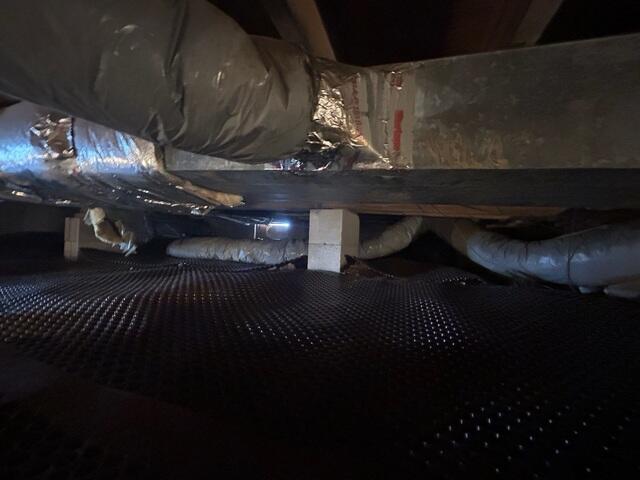
Drainage Matting Installed
This dimpled plastic sheet material promotes good drainage over the entire crawl space floor.
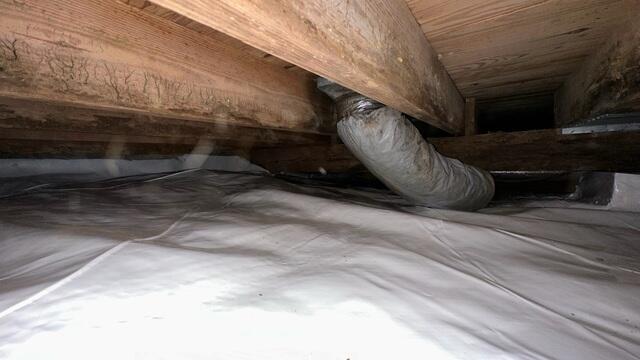
CleanSpace Liner
One key ingredient in our encapsulation system is the CleanSpace® vapor barrier, a super-durable 20-mil plastic sheet designed to permanently prevent moisture, outside air, and pests from entering your crawl space.
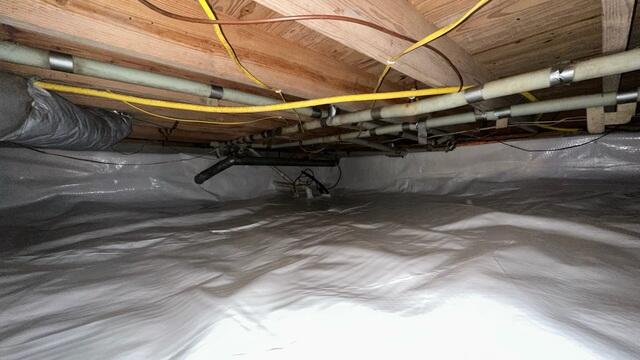
CleanSpace Liner on Walls
Like our other wall systems, it can hold back water vapor passing through your foundation walls. With anti-microbial protection called UltraFresh built right in, no mold or mildew will grow on the CleanSpace!
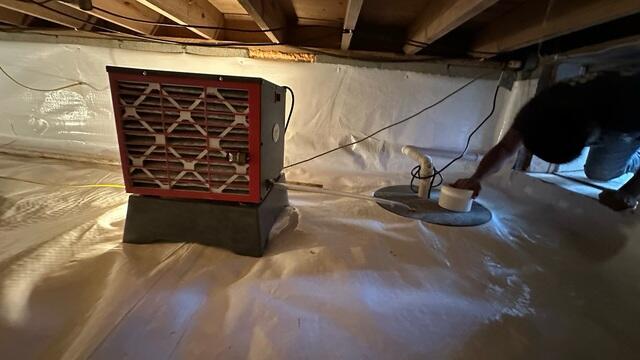
The SaniDry Sedona
The Sedona easily fits in small crawl spaces, yet has a powerful blower to effectively dry large crawl spaces. Mold and mildew are common in crawl spaces, but the Sedona keeps the relative humidity below 55%, so mold won't stand a chance. As a high-efficiency dehumidifier, the Sedona removes more moisture (100 pints per day) for less electricity cost than conventional models.
 4.9
4.9